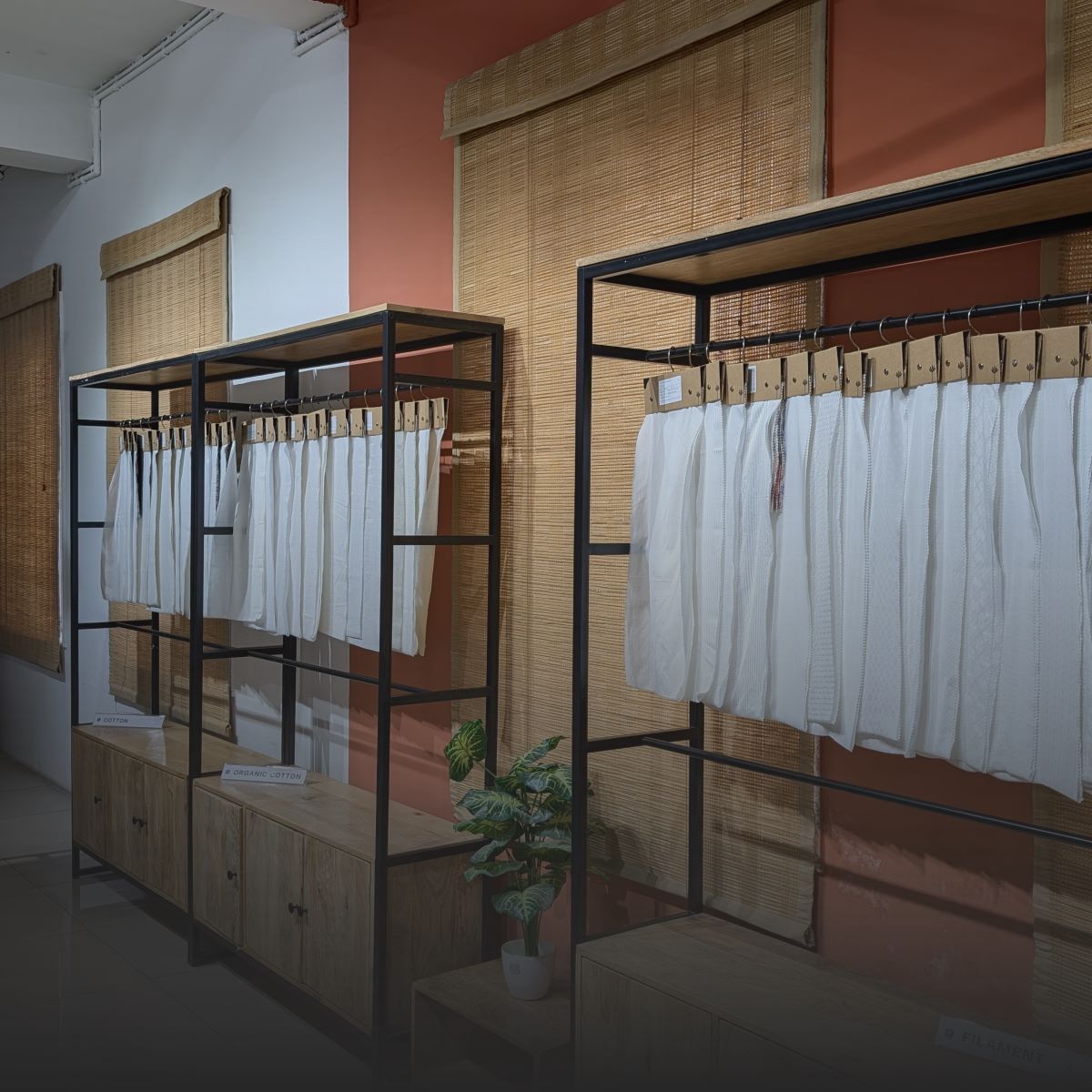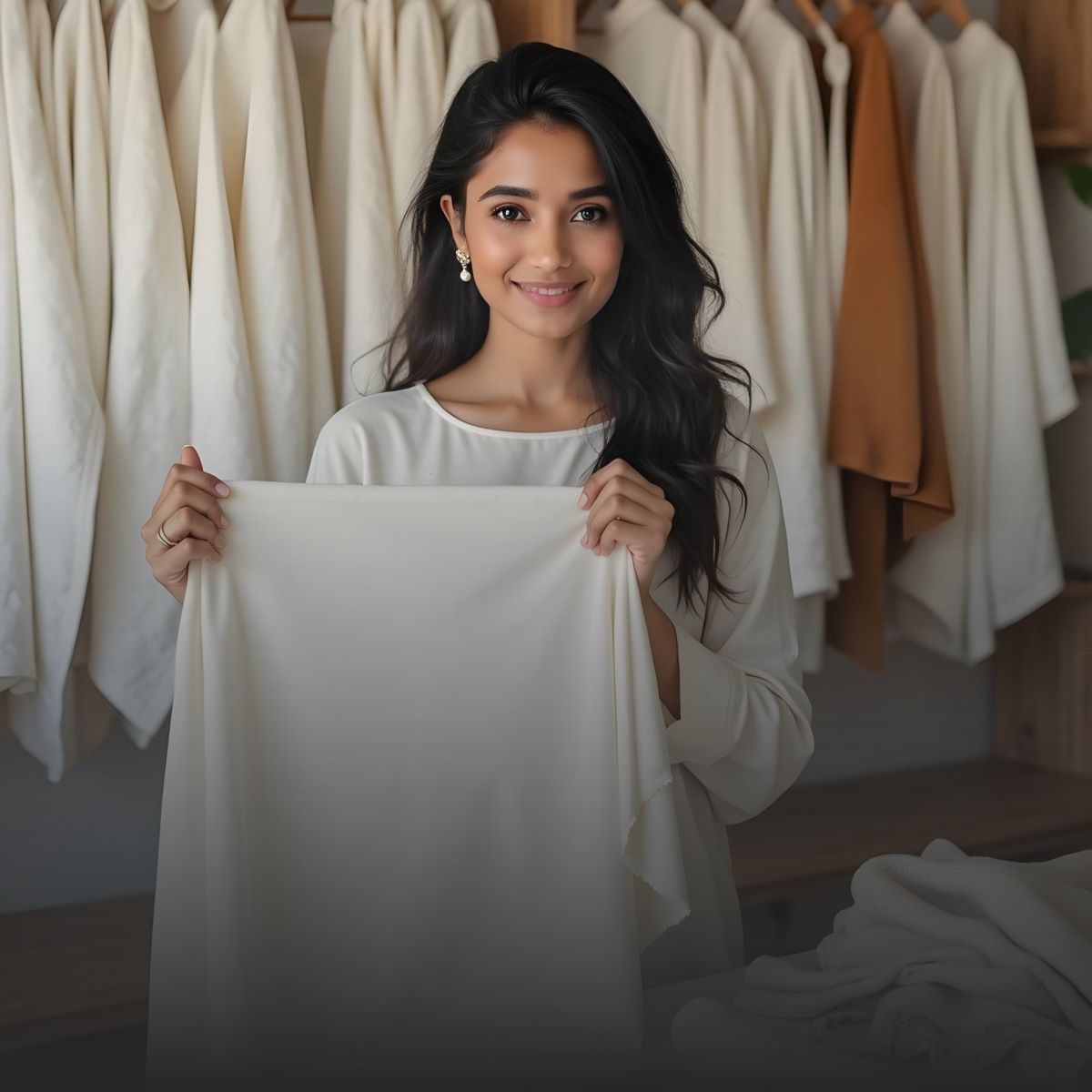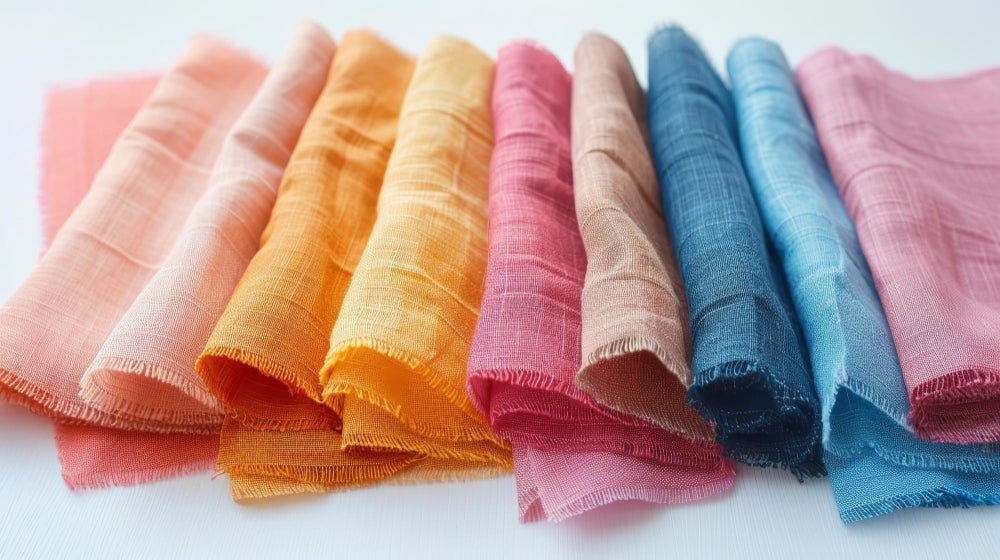Plain dyed fabrics form the base of every product line. Plain fabrics are flexible because they don't have prints that could get in the way of experimenting with shapes, textures, and layers. Uniforms, shirts, dresses, upholstery, home textiles, and coordinated clothing lines are all great things that can be made with them.
But color isn't the only thing that matters when buying; fabric quality, GSM consistency, color fastness, and MOQ flexibility are also essential.
For example, what kinds of plain color fabrics are near me, or where can I buy plain dyed fabrics in bulk? This comprehensive guide covers everything, from fabric varieties and GSM ranges to dyeing quality, testing, and sourcing options.
Why Plain Color Fabrics Are a Designer Essential
It may seem simple, but almost every fashion line or product line starts with plain dyed fabrics. Because they are so simple, they can be used with any style of design, whether it's modern, basic, or high-end.
Benefits of Choosing Plain Dyed Fabrics
- Color Uniformity: Great for keeping colors the same across clothing lines or outfits.
- Flexibility in design: This is the best ground for knitting, printing, or dying clothes.
- Long-Term Care: Less print and dye flow is lost.
- Savings on costs: Paper prints and digital prints cost more to make.
- Resonance that lasts: It can be worn with classic, dressy, or casual clothes.
Plain fabrics let brands define their signature palette while still allowing their designers to be creative. They come in a wide range of colors, from earthy neutrals and corporate tones to rich jewel tones.
Types of Plain Color Fabrics Available at Fabriclore
Fabriclore has more than 5000 color combinations and 120+ plain dyed fabric qualities for the clothing and home furnishings businesses.
You can look into the following main types of fabrics: natural fibers, sustainable fibers, and synthetic mixes.
1. Cotton Plain Dyed Fabrics
Explore: Cotton Dyed Fabric Collection | Fabriclore
- GSM Range: 35–250 GSM
- Ideal For: Shirts, uniforms, trousers, dresses, co-ord sets
- Dye Type: Reactive or Pigment
Cotton is the most popular plain-dyed cloth because it is soft and lets air pass through it. What can you find at Fabriclore?
- 30s Cotton Sheeting, Poplin, and Cambric for lightweight apparel
- Cotton Flex for structured garments
- Cotton, Satin, and Twill for premium formals
Why Choose It: It's soft, absorbs dye well, and is easy to care for, making it perfect for making clothes in bulk and wearing them every day.
2. Linen & Linen-Blend Fabrics
Explore: Linen Plain Dyed Fabrics | Fabriclore
- GSM Range: 90–200 GSM
- Ideal For: Resort wear, shirts, ethnic co-ords, upholstery
- Dye Type: Vat or Reactive
Plain-dyed linen fabrics give clothes and rooms a premium natural finish. These fabrics are highly valued for being long-lasting and having a beautiful texture. They come in both 100% linen and linen-cotton mixes.
Best For: Minimalist aesthetics, luxury casualwear, or breathable summer collections are what designers are focused on.

3. Viscose & Modal Dyed Fabrics
Explore: Viscose & Modal Collection | Fabriclore
- GSM Range: 100–180 GSM
- Ideal For: Dresses, blouses, resortwear, scarves
- Dye Type: Reactive or Disperse
Viscose and Modal are made from recycled cellulose fibers that have the same shine and flow as silk. Birla Viscose and Modal Satin bases from Fabriclore are great for bright solid tones.
'Why Choose It:
- Smooth fall and color brilliance
- Excellent for sustainable fashion lines
- Works for digital and reactive dyeing.
4. Silk & Silk-Blend Fabrics
- Explore: Silk Fabrics | Fabriclore
- GSM Range: 50–100 GSM
- Ideal For: Sarees, couture, dupattas, luxury dresses
- Dye Type: Acid or Reactive
Plain dyed silks are the best for artists who want to add style and luxury to their work. These fabrics, which range from pure silk and organza to chanderi and crepe blends, make any high-end line look better.
Highlight: It comes in both ready-dyed and dyeable (RFD) versions so that you can change the color.
5. Sustainable & Eco-Friendly Fabrics
Explore: Sustainable Fabrics | Fabriclore
- Includes: Liva™, Tencel™, Bemberg™, Organic Cotton, and ENZING™ fabrics
- GSM Range: 80–180 GSM
- Ideal For: Conscious fashion brands, kidswear, and luxury casualwear
- Dye Type: Low-impact Reactive
Closed-loop methods that use less energy and waste are used to make these eco-certified plain fabrics. For eco-friendly customers, they give designers traceable, biodegradable, and skin-safe textile options.
6. Polyester & Nylon Plain Fabrics
- GSM Range: 150–255 GSM
- Ideal For: Sportswear, uniforms, rainwear
- Dye Type: Disperse / Sublimation
Plain materials made from polyester and nylon last a long time, dry quickly, and don't cost a lot. A lot of activewear, outdoor jackets, and uniforms that need to be easy to clean use them.
Why Fabriclore Is the Trusted Source for Plain Dyed Fabrics
By combining certified quality, digital precision, and transparent supply chains, With over 10 years of experience in fabric sourcing, Fabriclore has become a trusted partner for sourcing plain color fabrics online.
It's used by professional designers, importers, and new clothing brands because:
1. Vast Color & Fabric Range
Fabriclore gives you a vast range of choices, with 120+ fabric types and 5000+ color options. You can choose from daily cottons to high-end silks and eco-friendly LivaTM bases.
2. Low MOQ for Designers
You can start your shopping with as little as 100 metres per color/design. This is an excellent amount for samples, capsule collections, and small-batch production.
3. Pantone-Matched Dyeing
Get your fabric coloured to match Pantone or custom colour codes precisely. Each batch stays true to the shade, making sure that the name is always the same.
4. Certified Dyeing Processes
OEKO-TEX® certified, AZO-free dyes are used to colour all materials. Low-liquor-ratio methods save water and make sure the colours are safe.
5. Fast Global Shipping
Ready-to-ship items are sent out in 24–48 hours, and custom-dyed fabrics are sent out in 10–15 business days. You can track your packages in real time with DHL and FedEx.
6. In-House Inspection & Testing
GSM consistency, colour fastness, and shrinkage control are strict checks that are done on every order. Fabriclore's team finds 20+ defect types to make sure that the fabric rolls are smooth and ready for production.
How to Choose the Right Plain Fabric for Your Brand
When looking for materials in a solid colour, you should always:
- End use: Apparel, upholstery, or accessories.
- GSM: Lighter weights (35–90) for flowy apparel; heavier (200+) for structure.
- Fiber type: Cotton for comfort, silk for shine, linen for texture.
- Color tone: Match to your brand's palette or seasonal Pantone chart.
-
Finish type: Matte, glossy, or soft-flow depending on product needs.
Customization Options for Plain Fabrics
Fabriclore offers more than just ready-dyed colours. They also provide custom colour development through Pantone-matched dying and lab dip approvals. The designers can:
- Upload a shad e reference or physical swatch.
- Request multiple tone options (light, medium, dark)
- Approve lab dips before production.
- Maintain the same recipe for consistent reorders
With this method, you can be sure of accuracy and long-term consistency across batches.
Fabriclore's Smart Sourcing Workflow
Here's an easy way for new brands or export houses to get started:
- Choose your base fabric (Cotton, Linen, Silk, Viscose, etc.)
- Select the desired GSM and shade.
- Request swatches or lab dips
- Approve your color
- Confirm MOQ (100m per color)
- Receive your finished order within 10–15 days.
Latest Trends in Plain Fabrics for 2025
The fashion industry is currently evolving towards earth-inspired tones and clean lines, and the plain colour fabric trend is a reflection of this transition towards simplicity and sustainability.
Emerging Trends Include:
- Tone of Earth: Terracotta, Olive, Sand, and Sage
- Palettes of one colour: Whites, greys, and soft pastels
- Sustainable Blends: Liva™ and Organic Cotton for eco brands
- Textured Solids: Linen slubs, cotton flex, and modal blends
- Mill-Dyed Brights: Jewel tones and color-blocked apparel
For brands to find a mix of style, sustainability, and comfort, they need to follow these trends.

Common Mistakes in Plain Fabric Sourcing (and How to Avoid Them)
|
Mistake |
Impact |
Solution |
|
Ignoring GSM and weave type |
Inconsistent drape or fit |
Confirm GSM before ordering |
|
Skipping swatches |
Shade mismatch in production |
Always test a swatch or lab dip |
|
Not verifying color fastness |
Fading post-wash |
Ask for test reports before dispatch |
|
Choosing price over quality |
Poor longevity, returns |
Prioritize certified mills |
|
Overlooking reorder plan |
Inconsistent shades later |
Keep color recipe records |
Final Thoughts
Plain-colored fabrics are the heart of every fashion collection because they are simple, classy, and can be worn in a million different ways.
When you have access to tested, approved, and reliable fabrics, you can make anything. From soft cottons and structured linens to luxurious silks and sustainable blends, the options are endless.
Brands from all over the world can use Fabriclore to get premium plain dyed fabrics with low MOQs, verified quality, and 15-day global shipping. This service, with ten years of experience in fabric sourcing, dyeing, and printing, combines traditional textile understanding with current purchasing efficiency.
Whether you're making your first capsule collection or making more, it's important to start with the right base.
Explore premium plain dyed fabrics at Fabriclore and bring your brand colors to life.
FAQs: Plain Dyed Fabrics
1. What Is A Plain Dyed Fabric?
A plain dyed fabric is one that has been dyed all over in the same colour. It's used as a base for printing, home decor, and clothing because the colours are consistent and the finish is good.
2. Which Fabrics Are Best For Plain Colors?
Most of the time, people dye plain colours on cotton, linen, viscose, silk, LivaTM, and modal. Each one has a different GSM range and finish, so they can be used for both clothing and home decor.
3. Can I Order Plain Dyed Fabrics In Small Quantities?
Yes. Designers and small brands can order plain fabrics from Fabriclore for small-batch production and samples because they have a low MOQ starting at 100 metres per colour.
4. Are The Dyes Used Eco-Friendly?
Of course. At Fabriclore, all plain-dyed fabrics are made with AZO-free, OEKO-TEX® certified dyes that are handled in low-water dyeing methods facilities that care about the environment.
5. How Long Does Delivery Take?
Ready-stock fabrics are sent out within 24–48 hours, and custom-dyed fabrics are delivered in 10–15 business days. For orders shipped anywhere in the world, DHL and FedEx offer real-time tracking.
We also happen to be a magnet for suggestions, and would love to catch yours….throw us yours on hello@fabriclore.com
Also Read Related Blogs:




